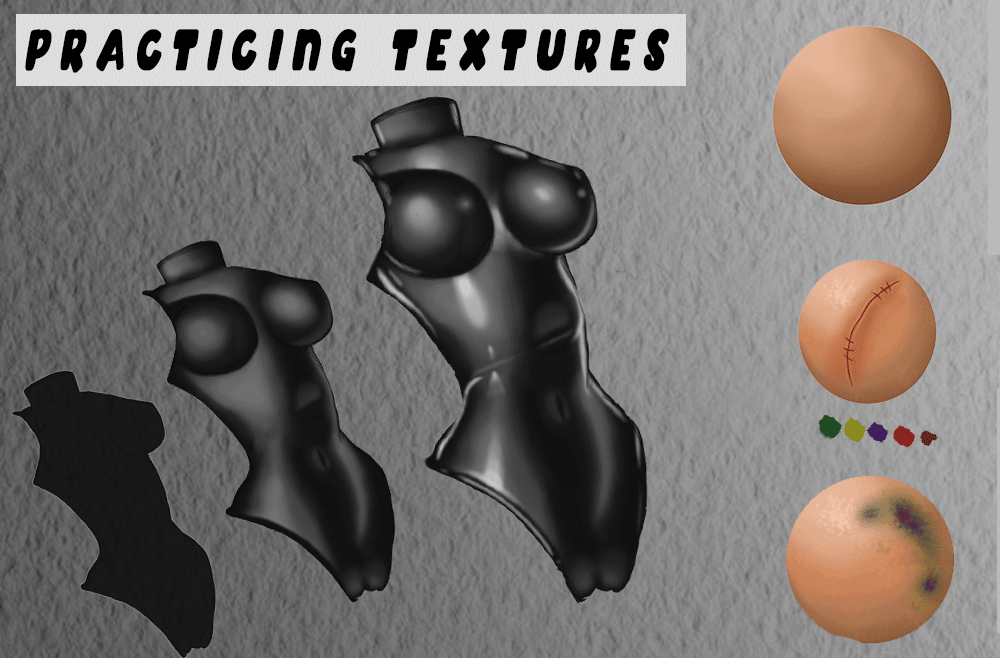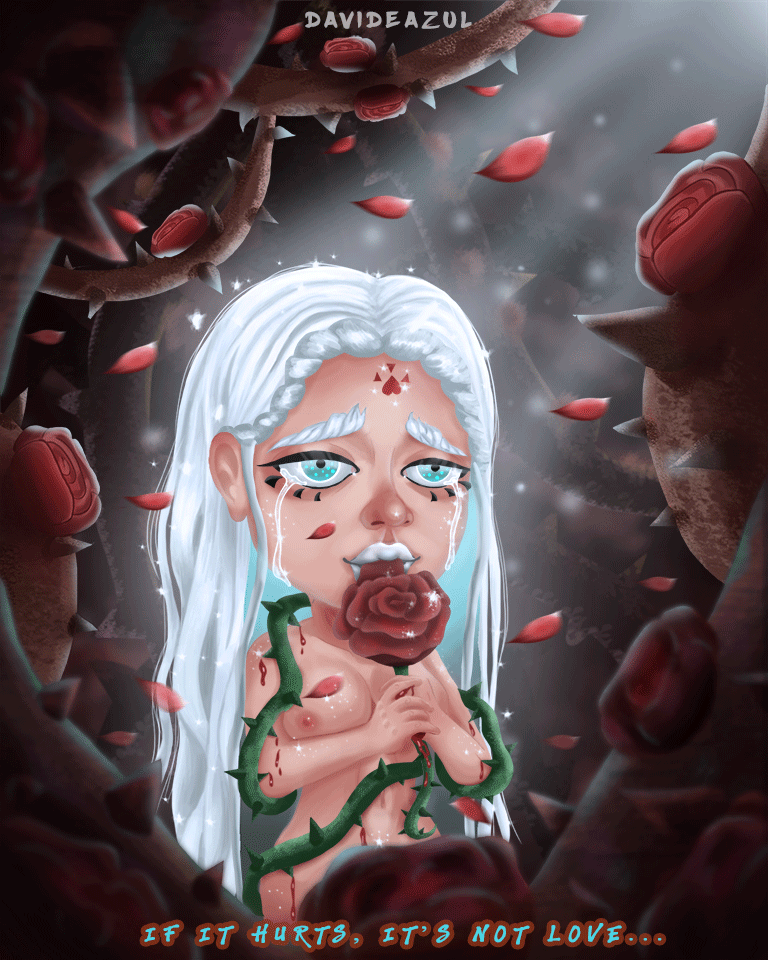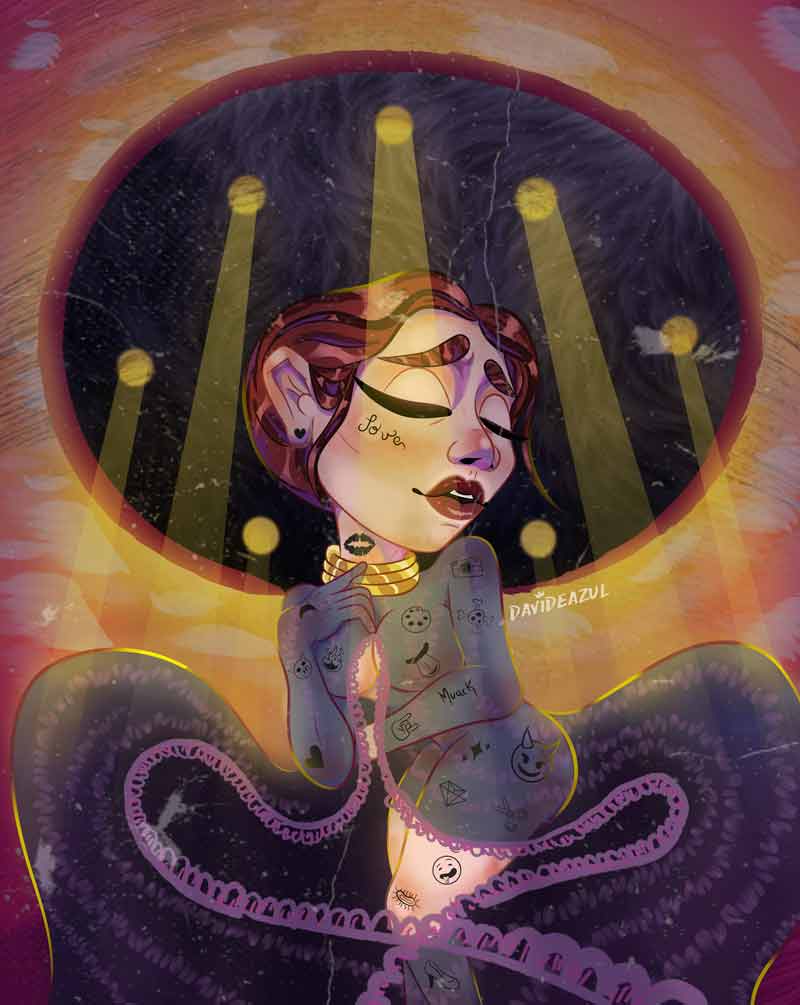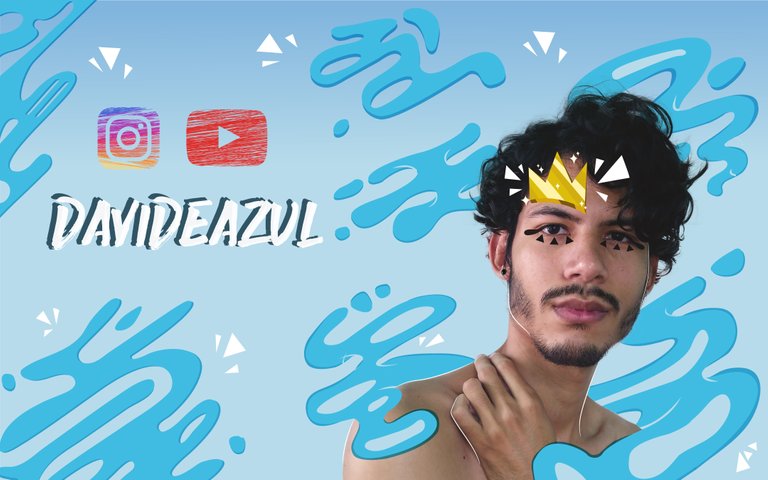
LET'S PRACTICE SOME TEXTURES!
I did not want to make this publication so long but what I have seen will be.
Until recently I wanted to do a latex practice, it is a texture that I have always wanted to do, I have seen them in other illustrations and it has aroused my curiosity.
The Latex!
 |  |
|---|---|
| First we have to make the sketch of the wardrobe, as in the example above. | Then we fill with black what would be our clothes. |
Let's start by understanding that latex is not a fabric itself, but rather a plastic that absorbs or glows a lot of light.
 |  |
|---|---|
| Then we add some diffuse lights, since this fabric not only reflects the light, but it spreads it through its surface. | Then in another layer we make the strongest lights, which would be the direct lights. |
This does not necessarily have to be the case all the time, the light in latex can vary in temperature, color and saturation depending on where you are.
 |  |  |
|---|
In these 3 we can see that latex can also have color, although very little, depending on where it is and the direct light it is reflecting.

THE SKIN!
Ahh, the happy skin that we have all wanted to draw perfectly.
If we start with that comment above, we must understand that all skins are not the same, first it varies in color, tones, and light and shadows interfere. It is already complicated.
Also, we all have different styles of drawings, we can make the skin in different ways, but it is always good to learn from the basics: realism.
 |  |
|---|---|
| Let's imagine that the skin is a circle, and that it has a dark part and a light part. | The thing to know is that skins have saturation variations. In this example we see that the saturation is set in the middle. |

Lastly, a skin without texture is just something smooth and shapeless. That is why we will add a few clearer pores in the light.

HOW DO OTHER LIGHTS INTERVENE?
 |  |
|---|---|
| The skin can change greatly depending on the space it is in: at night, day or evening. | So here we see two examples: with the light that reflects the metal. |
We must be aware that all elements close to the skin could reflect light and it is good to identify them, to make the illustration more vivid.

HOW TO DRAW WOUNDS?
 |  |
|---|---|
| To draw a cut we must know the colors to take: dark and light brown, with a slight shade of red. | The scars are usually marks that are left with purple edges, with a white surface. |

At first glance we usually see a green and purple. But if we pay more attention we will be able to see that more colors intervene that make the illustration richer: yellow and red.
It is always good to observe and identify how many colors intervene and could intervene in what we are going to paint.

MY TWO PIECES OF ART ON @NFTSHOWROOM!
 |  |
|---|---|
| "IF IT HURTS, IT'S NOT LOVE ..." There is only one issue left at 100 HIVE. | "I FEEL YOU HERE", only 5 editions at 50 HIVE each. |
| ART PIECE LINK ON NFTSHOWROOM | ART PIECE LINK ON NFTSHOWROOM |


¡PRÁCTIQUEMOS ALGUNAS TEXTURAS!
No quería hacer esta publicación tan larga pero lo visto sí lo será.
Hasta hace poco quise hacer una práctica de látex, es una textura que siempre he querido hacer, las he visto en otras ilustraciones y me ha despertado la curiosidad.
¡El Látex!
 |  |
|---|---|
| Primero tenemos que hacer el boceto del vestuario, como en el ejemplo de arriba. | Luego rellenamos con negro lo que sería nuestra ropa. |
Comencemos por entender que el látex no es una tela en sí, sino un plástico que absorbe o resplandece mucha luz.
 |  |
|---|---|
| Luego agregamos unas luces difusas, ya que esta tela no solo refleja la luz, sino que la riega a través de su superficie. | Luego en otra capa hacemos las luces más fuertes, que serían las luces directas. |
Esto no necesariamente tiene que ser así todo el tiempo, la luz en el látex puede variar de temperatura, en color y saturación dependiendo de donde estés.
 |  |  |
|---|
En estas 3 podemos ver que el látex también puede tener color, aunque muy poco, dependiendo del sitio donde esté y la luz directa que este reflejando.

¡LA PIEL!
Ahh, la dichosa piel que todos hemos querido dibujar perfectamente.
Si comenzamos por ese comentario de arriba, debemos entender que todas las pieles no son iguales, primero varía en color, tonos, además que interfiere la luz y sombras. Ya de por sí es complicado.
Además, todos tenemos diferentes estilos de dibujos, podemos hacer la piel de diferentes maneras, pero siempre es bueno aprender desde la básica: el realismo.
 |  |
|---|---|
| Imaginemos que la piel es un círculo, y que tiene una parte oscura y una parte clara. | Lo que hay que saber es que las pieles tienen variaciones de saturación. En este ejemplo vemos que la saturación se establece en el medio. |

Por último, una piel sin textura es solo algo liso y sin forma. Es por eso que agregaremos unos poros más claros en la luz.

¿CÓMO INTERVIENEN OTRAS LUCES?
 |  |
|---|---|
| La piel puede cambiar grandemente dependiendo del espacio donde está: en la noche, día o tarde. | Así que aquí vemos dos ejemplo: con la luz que refleja el metal. |
Debemos estar consciente que todos los elementos cercanos a la piel podrían reflejar la luz y es bueno identificarlos, para hacer más viva la ilustración.

¿CÓMO DIBUJAR HERIDAS?
 |  |
|---|---|
| Para dibujar un corte debemos saber los colores a tomar: el marrón oscuro y claro, con una leve tonalidad a rojo. | Las cicatrices suelen ser marcas que quedan con bordes morados, con una superficie blanca. |

A simple vista solemos ver un verde y morado. Pero si prestamos más atención lograremos ver que intervienen más colores que hacen más rico la ilustración: amarillo y rojo.
Siempre es bueno observar e identificar cuántos colores intervienen y podrían intervenir en lo que vamos a pintar.

¡MIS DOS PIEZAS DE ARTE EN @NFTSHOWROOM!
 |  |
|---|---|
| "SI DUELE, NO ES AMOR..." Queda una sola edición a 100 HIVE. | "TE SIENTO AQUÍ", sólo 5 ediciones a 50 HIVE cada una. |
| ENLACE DE LA PIEZA DE ARTE EN NFTSHOWROOM | ENLACE DE LA PIEZA DE ARTE EN NFTSHOWROOM |



Twitter (#posh)
Holaaa, mucho gustoo David (:
Está buenisimoo tu post, muy interesanteee!
Por mi parte soy mas de dibujar al tradicional pero actualmente me he estado metiendo poco a poco en el arte digital, y este post me cae de maravilla, gracias!
Sigue así, un abrazo <3
Ahhh, me alegra un montón! Espero que te sea muy útil 🤩 traeré mucho más, gracias por comentar!